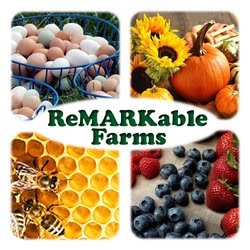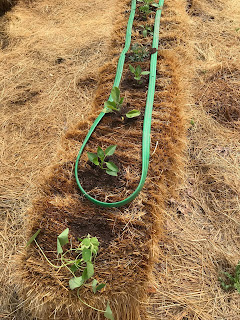Farm Updates
I guess "winter" is going to officially begin some time this week so it's probably best to do a Fall Farm update. It was busy...of course...
 |
| Using the squeezo that Julie Skinner gave me to make apple BBQ sauce. I LOVE this machine! |
I am going to start with a list of items that I canned this past summer and fall. This is not a bragging list. In fact, I wish I could have done more. It is more for me to know how much I put up and how long it lasted us so I can prepare even better for next year:
6 pints green tomato salsa
7 pints red tomato salsa
6 pints Rotel
8 half pints of apple BBQ sauce
4 quarts apple juice
2 quarts pears
14 pints pears (note to self...only can 1 1/2 pints of pears next year)
6 pints apples
3 quarts applesauce
6 pints applesauce
4 1 1/2 pints applesauce
10 quarts tomato sauce
2 pints tomato sauce
6 half pints elderberry syrup
6 pints pickled beets
3 quarter pints candied jalapenos
8 quarts apple pie filling
I made some pear preserves, apple cider jelly and apple pie jam for the Farmer's Market next year.
The pear preserves and apple cider jelly will be new products next year!
I just love the pear preserves. I think it is my favorite jam! I put the apple cider jelly in my coffee in the morning sometimes as a sweetener.
I also have canned broth and garbanzo beans, but I just do this on a continuous basis when we need more.
In the freezer:
3 gallon bags of green beans
4 pints of pesto
3 quarts of corn
I cook down pumpkin and save it in the freezer as we need it.
I also dehydrated a lot of herbs, flowers, and vegetables. I am planning to write a blog post about that so I am not going to expand on that right now...
Worm bin
Last January, I started a worm bin. It has been REALLY slow going. I just added the 3rd bin last month. I had been stuck at just 2 bins this entire year. A total of 5 bins came with the unit. I still enjoy feeding the worms and I am hopeful that they will continue to grow. I think I had read that it takes 3 months for their numbers to double so, it is a slower process than I thought. These are definitely not honeybees.
Overwintering in the garden
I am trying an experiment with growing overwintering onions. The idea is that you start the onions in the fall and they start to grow and then stop growing when it gets colder and the days get shorter. I planted the seed in August in the house and then transplanted them out into the garden in September.
Now, we just wait until the spring. Once them temperatures start to warm and the daylight increases, they will start growing again. It is similar to growing garlic. Then, you should be able to harvest starting in May/June. If you decide to do this next year, make sure you get the correct type of seed. Onions are daylight sensitive so you need to make sure you get "overwintering" onions that will be stimulated to start growing more when the daylight increases.
I had some covers made out of Agribon and put them over the top.
I also did the same thing with some lettuce and spinach that I planted in the fall. I got it started and covered it to let it sit until the spring.
Taken from
Our Stoney Acres website:
Lettuce seedlings planted that late in the fall will start to grow but won’t get terribly big. You are looking for seedlings that are maybe only 2 or 3 inches tall when you’re 10 hour days arrive in November. If you then protect the seedlings in a hoop house or a cold frame depending on how harsh of winter you have. The harsher the winter the more protection they need. If you live in a zone 6 or below I would recommend using a cold frame to protect the seedlings.
You will peak in on the seedlings during the winter and they look awful. They’ll be wilted and frozen looking but if your protection holds they will spring back and look fantastic as soon as the sunlight returns in the spring. These seedlings will then be ready to eat months sooner than seedlings that you had planted in the spring.
Also, I did the same with spinach.
I know, I should have gotten the covers on before the snow came but I had to have the elastic sewed into the it and I did not get them back in time. I am not too worried. I think everything will be fine. I really wanted to get a cold frame built but I guess that will be a project for next year...
I made some new raised beds for the garden. I actually made 3-4x8 foot raised beds. Here a pic of when I was filling them up. I also expanded the garden a bit to have a nice place for planting corn.
In the Kitchen
I started to harvest my pepitos. Pepitos are hulless pumpkin seeds. You have to grow a "special" kind of pumpkin that produces these seeds.
More than 200 years ago, a multigenerational mutation took place in a pumpkin patch in Styria, a region of Austria. The unusual pumpkins had seeds without hulls. Since then, generation after generation of Styrian farmers have saved the seed from the pumpkins with the thinnest hulls, largest seeds and greatest quantity of seeds. The result was that Styrian pumpkins now have large cavities filled with hull-less green seeds containing between 40 and 50 percent oil. A crop can produce up to 1,000 pounds of dry seeds per acre.
The pepito pumpkins did not grow very big and I was concerned that I would not get many seeds or that they would all be little tiny seeds and it would be hard to harvest.
However, I was pleasantly surprised! The little pumpkins were loaded with nice, big, green, hulless seeds!
We will be growing more of these!
We are thankful for our fall harvests and hope you were successful in your harvest too!
~Denise


















































